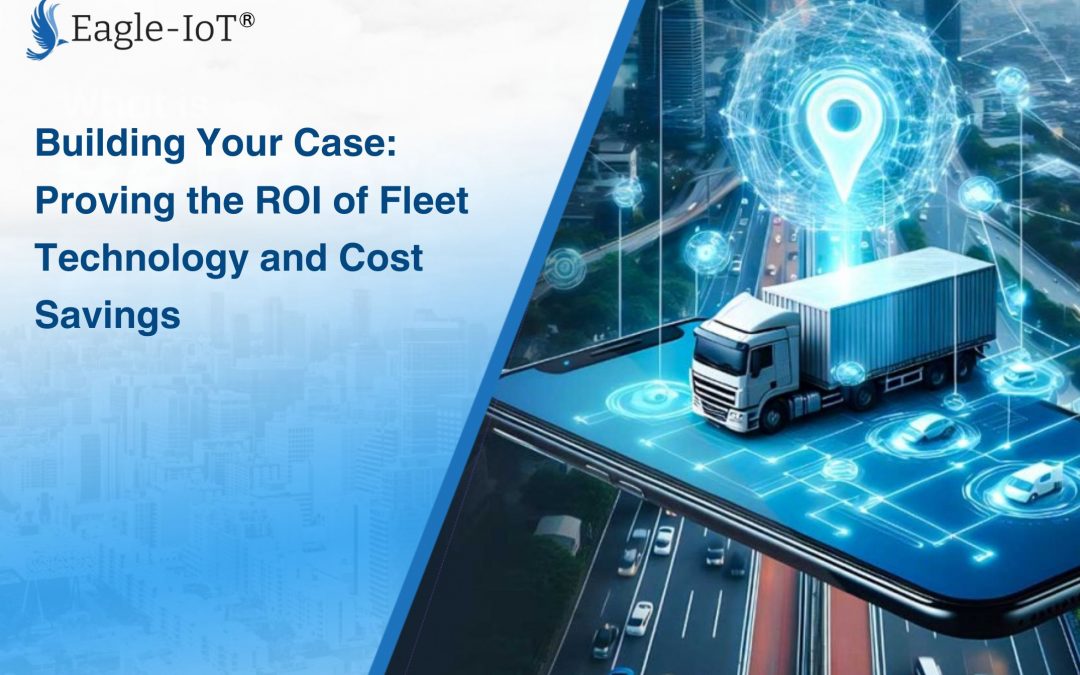As businesses face increasing pressure to stay competitive, the need for efficiency, cost reduction, and smarter investments has never been greater. Companies are constantly exploring innovative solutions to streamline operations and drive long-term value—especially when it comes to managing their fleets.
For businesses that rely on fleets—whether it’s a delivery service, transportation company, or logistics provider—fleet technology has emerged as a game-changer. But as with any new investment, demonstrating the return on investment (ROI) and potential cost savings can be a challenge. This article will explore how to effectively make your case for fleet technology by showcasing the tangible benefits it offers.
Understanding the Importance of Fleet Technology
Fleet technology encompasses a variety of tools and solutions, including telematics, GPS tracking, route optimization software, fleet management systems, and advanced vehicle diagnostics. These technologies collect, analyze, and interpret data, providing real-time insights that can help businesses make informed decisions. From reducing fuel consumption to improving maintenance schedules, fleet technology can streamline operations, enhance driver safety, and ultimately contribute to the bottom line. But to gain buy-in from decision-makers or justify the initial investment, you need to demonstrate how these technologies directly impact the company’s financial health.

Key Metrics to Demonstrate ROI and Cost Savings
Fuel Efficiency and Savings
Fuel is one of the largest operating expenses for any fleet, and even minor improvements can lead to significant savings. Fleet technology solutions that offer real-time fuel monitoring, route optimization, and driver behavior analysis can all help cut fuel consumption. By optimizing routes, eliminating idle time, and promoting efficient driving behaviors such as reducing harsh braking and speeding, companies can reduce fuel costs and improve fuel efficiency.
How to Demonstrate ROI:
- Track fuel usage before and after implementing fleet technology.
- Use route optimization data to show how shorter routes, less congestion, and fewer idling hours have directly impacted fuel costs.
- Calculate fuel savings and project future savings based on current trends.

Maintenance and Vehicle Lifespan
Preventive maintenance is another area where fleet technology can have a significant impact. By using telematics and diagnostic tools, fleet managers can identify potential issues before they become costly repairs. This helps reduce downtime, extend the lifespan of vehicles, and avoid expensive emergency maintenance costs.
How to Demonstrate ROI:
- Show how technology-enabled maintenance scheduling has reduced the frequency of unscheduled repairs and extended the life of your vehicles.
- Present data on maintenance costs, including how technology has reduced the number of service visits and the severity of repairs.
- Compare the lifetime cost of vehicles before and after adopting fleet management technology.
Driver Performance and Safety
A fleet’s safety record directly affects operating costs, including insurance premiums, liability claims, and worker compensation. Fleet technology can monitor driver behavior, provide feedback in real time, and promote safer driving habits. This leads to fewer accidents, less damage to vehicles, and a safer work environment for employees.

How to Demonstrate ROI:
- Track incidents of speeding, harsh braking, and other risky behaviors before and after the implementation of fleet technology.
- Calculate the reduction in accident rates and estimate savings from lower insurance premiums.
- Highlight any direct correlation between improved driver performance and reduced accident claims.

Time Efficiency and Productivity
Fleet management systems and route optimization tools can significantly improve time efficiency. By ensuring drivers follow the most efficient routes, reduce downtime, and minimize delays, businesses can increase the number of deliveries or services completed each day.
How to Demonstrate ROI:
- Compare the number of completed jobs per day or week before and after implementing fleet technology.
- Calculate the time savings from reduced idle time and detours, and translate this into more efficient use of labor and resources.
- Show how more efficient scheduling can improve service delivery times and customer satisfaction.
Compliance and Regulatory Savings
In many industries, fleet operators must comply with various regulations, including hours of service (HOS) rules, emissions standards, and safety inspections. Fleet technology helps ensure that vehicles meet regulatory requirements, reducing the risk of fines, penalties, or downtime due to non-compliance.

How to Demonstrate ROI:
- Show how the technology automatically tracks compliance with regulations and provides reports, reducing the time and cost spent on manual tracking.
- Track any fines or penalties before and after implementing technology, and calculate the savings by avoiding violations.
- Estimate the time saved in paperwork and reporting, allowing staff to focus on more valuable tasks.

Building Your Case: Presenting the Data
To effectively demonstrate ROI and cost savings, it’s essential to present a data-driven case to decision-makers. Here’s how you can structure your argument:
Quantify Savings with Data
The most persuasive way to show ROI is through numbers. Collect data on fuel costs, maintenance expenses, insurance premiums, and accidents before and after implementing fleet technology. Use this information to project how much money your company could save over a year, three years, or five years.
Show Long-Term Benefits
Fleet technology is an investment that can provide long-term benefits. While the initial costs may seem significant, the long-term savings far outweigh them. Provide forecasts on the future value of fleet technology, including savings from reduced fuel consumption, fewer accidents, and extended vehicle lifespans.
Use Case Studies or Industry Benchmarks
Support your argument by referencing case studies or industry benchmarks. If other companies in your sector have successfully implemented fleet technology, use their examples to reinforce your case. Showing how others have benefitted from these tools can provide a more concrete picture of potential outcomes.
Highlight Intangible Benefits
While quantifiable savings are crucial, don’t forget to mention the intangible benefits of fleet technology. These may include improved customer satisfaction, better decision-making capabilities, and enhanced brand reputation. These factors can also contribute to increased revenue over time, though they might be harder to quantify directly.
Account for the Total Cost of Ownership (TCO)
When calculating the ROI, be sure to include the total cost of ownership, which encompasses not just the upfront cost of the technology but also any ongoing costs for maintenance, training, and software updates. Showing that the overall costs are manageable will make your case even more compelling.
Conclusion: A Smarter, More Profitable Fleet
Fleet technology is no longer a luxury but a necessity for businesses looking to reduce costs, improve operational efficiency, and stay competitive. By demonstrating clear ROI through savings in fuel, maintenance, safety, and time efficiency, you can make a strong case for investing in fleet management tools. Remember, the key to getting buy-in is presenting a data-driven argument that not only highlights short-term cost savings but also shows the long-term strategic value that fleet technology can bring to your business.

By making your case effectively, you can turn fleet technology from a theoretical advantage into a real, bottom-line benefit.
Eagle-IoT provides the tools and insights you need to unlock these benefits, empowering your fleet to operate smarter, safer, and more profitably. Contact us today to learn more about how our solutions can drive your business forward.


